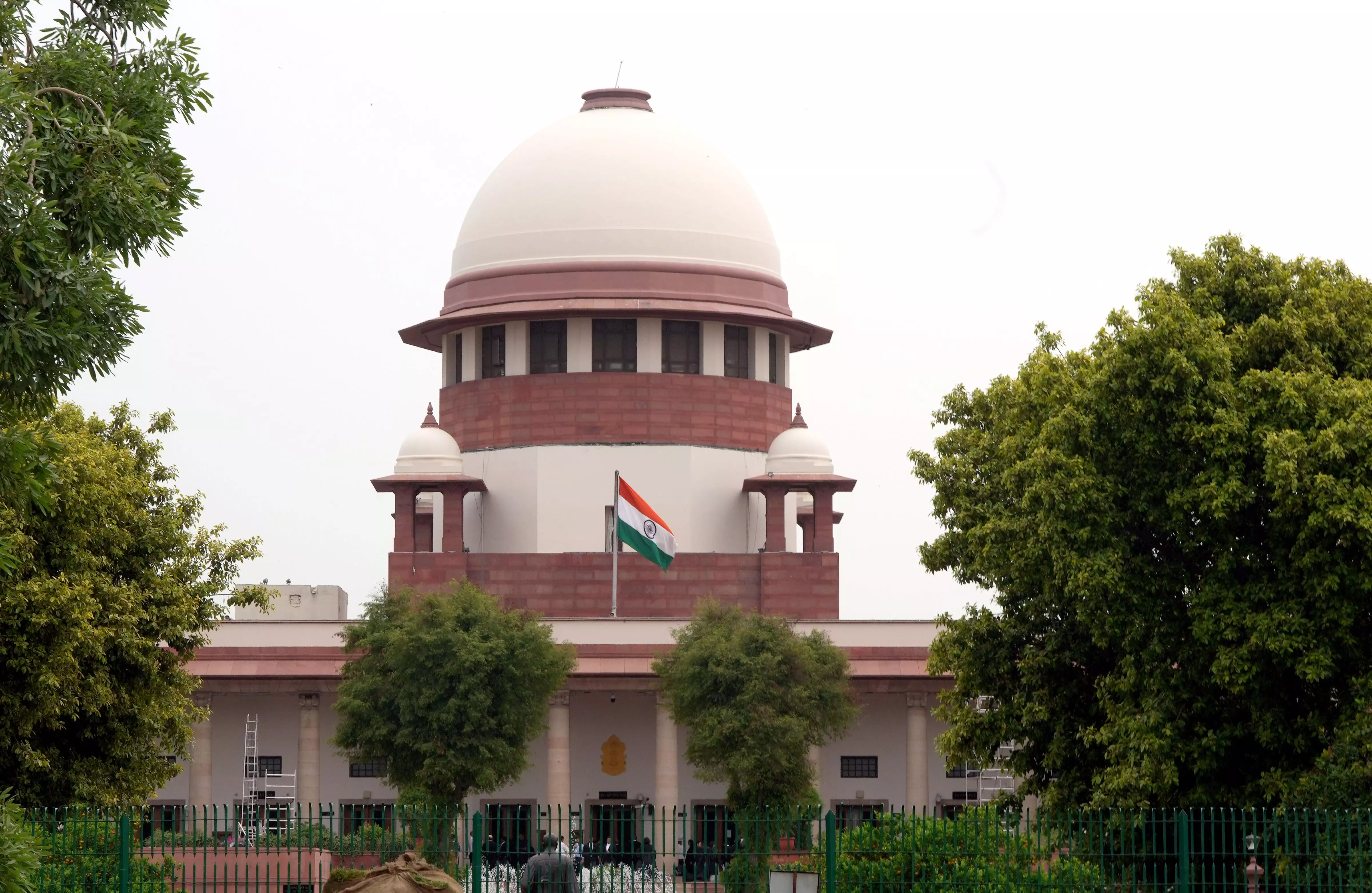SC Lays Down Pan-India Rules on Bulldozer Action
Terms it high-handed and arbitrary that needs to be dealt with the heavy hand of the law

New Delhi: The Supreme Court on Wednesday laid down pan-India guidelines on demolitions and said no property should be demolished without a prior show cause notice and the affected must be given 15 days to respond while likening “bulldozer justice” to a lawless state of affairs where might is right.
The apex court termed such excesses high-handed and arbitrary and said that they need to be dealt with the heavy hand of the law. The bench of Justices B.R. Gavai and K.V. Viswanathan observed, “Our constitutional ethos and values would not permit any such abuse of power and such misadventures cannot be tolerated by the court of law”.
The bench termed as chilling the sight of a bulldozer demolishing a building, rendering women, children and aged persons homeless overnight and said, “The chilling sight of a bulldozer demolishing a building, when authorities have failed to follow the basic principles of natural justice and have acted without adhering to the principle of due process, reminds one of a lawless state of affairs, where might was right.”
The top court said the executive cannot assume judicial powers to punish citizens by demolishing their properties without following due process as it violates the constitutional principle of “separation of powers”.
Underscoring the importance of home, the top court quoted a Hindi couplet by famous poet Pradeep which reads: Apna ghar ho, apna angan ho, is khwab mein har koi jeeta hai! Insan ke dil ki yeh chahat hai, ki ek ghar ka sapna kabhi na toote! (It is a dream of every person, every family to have a shelter above their heads. A house is an embodiment of the collective hopes of a family or individuals’ stability and security).
The top court also referred to the observation of Lord Denning in the case of Southam vs Smout: ‘The poorest man may in his cottage bid defiance to all the forces of the Crown. It may be frail – its roof may shake – the wind may blow through it – the storm may enter – the rain may enter – but the King of England cannot enter – all his force dares not cross the threshold of the ruined tenement.’ So be it – unless he has justification by law.”
In its 95-page judgment, the top court said, “If the executive acts as a judge and inflicts penalty of demolition on a citizen on the ground that he is an accused, it violates the principle of separation of powers.”
The top court, however, made clear that they will not be applicable if there is an unauthorised structure in a public place such as road, street, footpath, abutting railway line or any river or water bodies and also in cases where there is an order for demolition made by a court of law.
“No demolition should be carried out without a prior show cause notice returnable either in accordance with the time provided by the local municipal laws or within 15 days time from the date of service of such notice, whichever is later,” the bench said.
Taking recourse to extraordinary powers under Article 142, the bench also passed a slew orders to allay the apprehension the fears in the minds of citizens with regard to arbitrary exercise of power by the officials of the state.
Article 142 empowers the apex court to pass any decree or order necessary for doing complete justice in any case or matter pending before it. Even after orders of demolition are passed, the affected party needs to be given some time so as to challenge the order before an appropriate forum, the bench said, adding, even in cases of persons who do not wish to contest the demolition order, sufficient time needs to be given to them to vacate and arrange their affairs, the apex court said.
“Heavens would not fall on the authorities if they hold their hands for some period,” the bench said.
It directed that notice shall be served upon the owner/occupier by a registered post. Additionally, the notice shall also be affixed conspicuously on the outer portion of the structure in question.
“The time of 15 days, stated herein above, shall start from the date of receipt of the said notice,” it said.
To prevent any allegation of backdating, the bench directed that as soon as the show cause notice is duly served, intimation shall be sent to the office of the concerned collector or district magistrate digitally by e-mail.
“The collector/DM shall designate a nodal officer and also assign an e-mail address and communicate the same to all the municipal and other authorities in charge of building regulations and demolition within one month from today,” it said.
The notice shall contain details regarding the nature of unauthorised construction, specific violation and the grounds of demolition, it directed.
It said the final order should contain the contentions of the 'noticee', and if the designated authority disagrees with the same, the reasons for it.
The bench said the final order shall also contain why the extreme step of demolition is the only option available and other options like compounding and demolishing only part of the property are not available.
It also said the proceedings of demolition shall be videographed. “The proceedings of demolition shall be video-graphed, and the concerned authority shall prepare a demolition report giving the list of police officials and civil personnel that participated in the demolition process. Video recording to be duly preserved,” the bench said.
“Needless to state that the authorities hereinafter shall strictly comply with the aforesaid directions issued by us. It will also be informed that violation of any of the directions would lead to initiation of contempt proceedings in addition to the prosecution,” the bench said.
The verdict came on pleas seeking framing of guidelines on demolition of properties.

